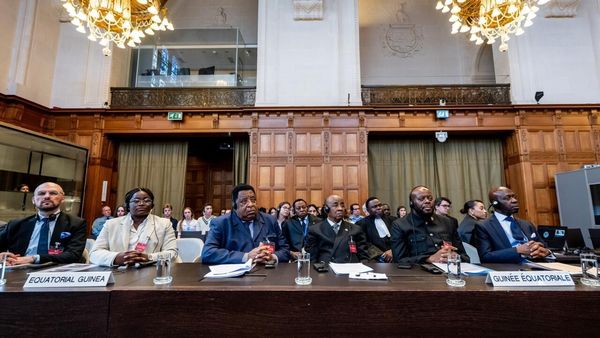Alright, forget about PSP for a second. If you read yesterday's post you'll know I spent Tuesday at the Mobile section of GDC Europe. Here are some more random and possibly inaccurate findings from the range of seminars I attended, including Square Enix's mobile plans, how people pay for games in Japan and Korea (more interesting than it sounds) and how Wal-Mart could have destroyed the games industry in the early eighties…
More things I found out at Mobile GDC
1. EA is rumoured to be looking into acquiring another development studio, possibly UK innovator Ideaworks3D, or US newbie Floodgate. When Mobile GDC organiser Robert Tercek put this to EA's CTO of Worldwide Mobile Gaming, Lincoln Wallen, during the 'Global Perspectives on Mobile game Publishing' group discussion he replied that 'EA does not comment on rumours'. So it's definitely true then.
2. A year ago, Square Enix released Before Crisis: Final Fantasy VII for mobile phones. The game cleverly exploits the handset's camera, requiring players to photograph specific colours to activate spells – for example, if you want to use a water spell, you need to take a snap of something blue. Interestingly, incorporating this element into the game required the phone manufacturer and network operator to give Square Enix access to some hardware APIs usually kept well away from game developers. According to the 'Global Perspectives' panellists, this kind of cooperation is absolutely unheard of in the west. Typical.
There's also a basic multiplayer element – if you get into difficulty while fighting a monster, it's possible to put out a call for help via in-game text message to other members of the community. Some warm-hearted hero then comes to your rescue. Also, if you're killed, your avitar is sent to a sort of prison where, once again, you're allowed to put out a call for help – if someone turns up and releases you, you can re-enter the game. If no one answers your plea, your character dies.
Finally Square Enix operates a subscription model, releasing a new chapter of the game very month. They're now onto Chapter 17 and Ichiro Otobe, who heads up the company's North American operations, claims that most of the players have remained throughout the experience.
3. Kyu Lee, General Manager of Global Business Department at Gamevil, gave some interesting insights into the Korean mobile games industry. He said that 3D games phones are being heavily advertised in the country, but take-up is still modest and, realizing that content is the key, carriers are actually financing 3D games themselves, even setting up development competitions to encourage new titles. Perhaps European network operators have a thing or two to learn from this pro-active approach. Talking about pro-active approaches, I think I also heard Lee claiming that Gamevil publicised its games directly to key demographics, for example, distributing promo material outside schools… Is that legal?
4. You may already know about this, but just in case… Japanese and Korean carriers support an innovative payment method for games and other downloadable content. Magazine adverts now carry barcodes (or QR codes), which can be photographed via mobile phone. The snap is then sent to a dedicated wap site which mails a link back to the customer so that they can download the desired mobile game, ring-tone or wallpaper. When's that going to happen here?!
5. During the Global Perspectives session, Robert Tercek talked about how mobile game publishers in the US won't give any significant marketing support to non-branded IP – this approach has meant that very good games have had to be re-named for the American market – Gamevil's excellent Baseball 2005, for example becoming CBS SportsLine Baseball. Essentially by demanding only licensed titles, publishers are more-or-less killing innovation – in the same way as major retailers are strangling creativity by stocking only safe Triple 'A' console titles.
Tercek went on to make the point that, "if Wal-Mart had existed in its current form in the early eighties, we wouldn't have seen the level of innovation that we've seen so far in the videogame industry. There would have been no Quake…" Scary and thought-provoking stuff for the big mobile players. In response, EA's Lincoln Wallen insisted that the company demands innovation from its developers when transporting brands from console to mobile. "They have to ask, what does a driving game mean on mobile," he said. We'll see…
6. Sony Ericsson is stepping up its commitment to games according to Mikael Nerde, of the company's Developer Program. There are already around 25 Sony Ericsson handsets with 3D graphics capabilities, and now there are plans to distribute games on Memory Sticks via retail stores – a model that didn't work too well for N-Gage, but then this is Sony we're talking about, and they're done quite well in the games industry. Nerde sees more and more phones being released with secondary storage facilities in the future, so you better get used to carrying teeny memory cards wherever you go…
7. Chris Melissinos, Sun Microsystems' Chief Gaming Officer, had an interesting idea. He talked about how he'd like to see mobile phones providing gaming services for traditional games platforms – "like texting you when all your buddies are on a Battlefield 2 server ready to play. It's really frustrating waiting 45 minutes to find and get on a server…" Sounds great – imagine being in the middle of a sales meeting when you get a text informing you that your worst enemy is currently hanging around waiting for you on an Unreal Tournament server with superbly low ping rates. Mobile phone as gaming butler. I like it.







